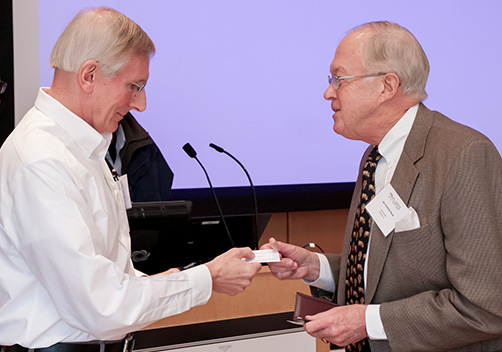Conference links business, academic leaders seeking energy solutions
By
on
Business leaders and Princeton University scientists gathered for a daylong meeting Nov. 15 to explore solutions to problems of energy and the environment, including adapting to climate change, evolving the electric grid and enabling greener construction.
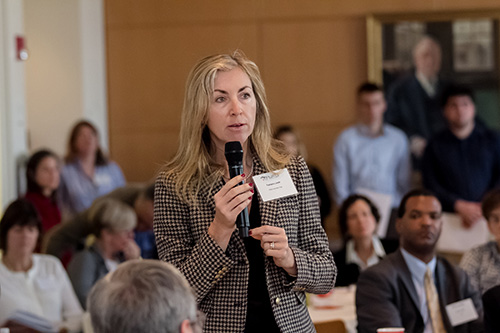 The meeting was the second annual conference of the Princeton E-ffiliates Partnership, a University-wide initiative to link executives from a wide range of businesses with leaders in academic research and top students to accelerate the pace of innovation in energy and the environment.
The meeting was the second annual conference of the Princeton E-ffiliates Partnership, a University-wide initiative to link executives from a wide range of businesses with leaders in academic research and top students to accelerate the pace of innovation in energy and the environment.
The meeting included a series of talks, panel discussions and networking opportunities at the University’s Friend Center.
“The faculty who presented are working on really interesting problems with an excitement that is palpable,” said Merrick Andlinger, president of Andlinger & Co., and a member of the advisory council of Princeton’s Andlinger Center for Energy and the Environment. “In a forum like this you get to see an interchange, with the business people tending to think in terms of practical solutions: What does this do? What are the risks? How does that affect the future of my business?”
The Andlinger Center, which administers E-ffiliates in partnership with the Princeton Environmental Institute, the School of Architecture and the Program in Science, Technology and Environmental Policy, seeks to leverage Princeton’s deep expertise to develop practical approaches to sustainable energy and protection of the environment.
“So this kind of forum is a great way to see some of that in action, to see the seeds planted,” Andlinger said.
Scott Jennings, vice president for corporate strategy at PSEG, a charter member of E-ffiliates, said that in addition to the timely topics and strong panels of speakers, he was also impressed by the poster session at which students and post-docs presented their latest research findings. “The students really demonstrated their technical expertise,” said Jennings, who is a visitor-in-residence at Princeton. “They dove into issues that industry is wrestling with and proposed technologically sound solutions grounded in economic realities.”
Given the strength of the presentations, Jennings viewed the session as a good recruiting opportunity. “We saw some tremendous talent there and and we look forward to following up,” he said.
Among highlights of the conference were
 A keynote address by Cheryl LaFleur, a member of the Federal Energy Regulatory Commission and a 1975 Princeton alumna;
A keynote address by Cheryl LaFleur, a member of the Federal Energy Regulatory Commission and a 1975 Princeton alumna;
Talks on current research in converting municipal waste to liquid fuels, creating greener concrete and reducing the risks of tropical cyclones in a changing climate;
A presentation by Willem Rensink of Shell International Exploration & Production on Shell’s scale-up of biofuel production;
Panel discussions on climate adaptation and emerging energy technologies.
“It is gratifying to see the level of enthusiasm from our member companies and visitors outside the University about the work being carried out at Princeton,” said Professor Lynn Loo, associate director for external partnerships at the Andlinger Center.
“The students and faculty are equally excited about the opportunity to interact, as evidenced by the record number of attendees and posters,” said Loo, who earned a Ph.D. at Princeton in 2001. “I am confident that the level of interactions will continue to grow.”
Andlinger said that panel discussions such as one that brought together federal, regional, corporate and academic authorities to discuss adaptation to climate change were particularly stimulating.
“I found the meeting fascinating and frankly it made me want to be a student again to spend more time with some of the faculty,” Andlinger said.

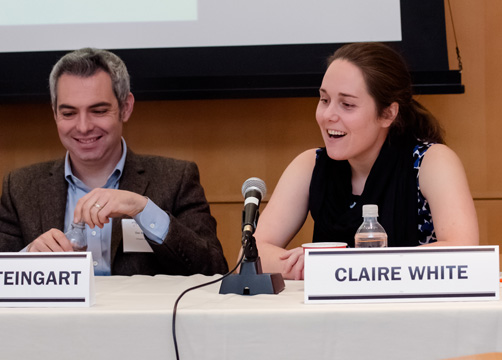
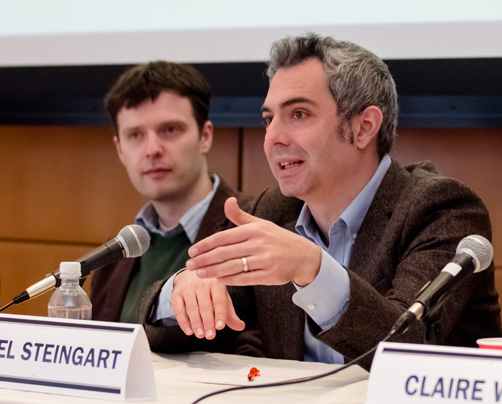
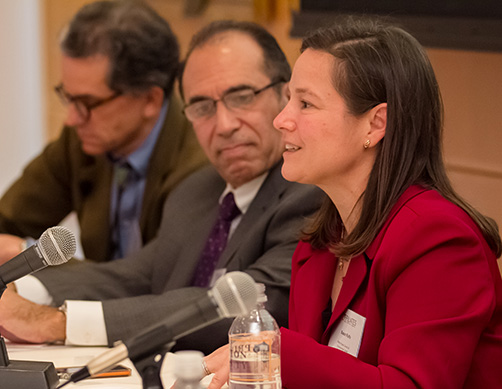
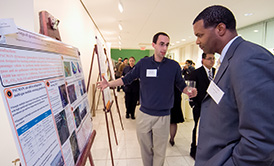
 .
.
